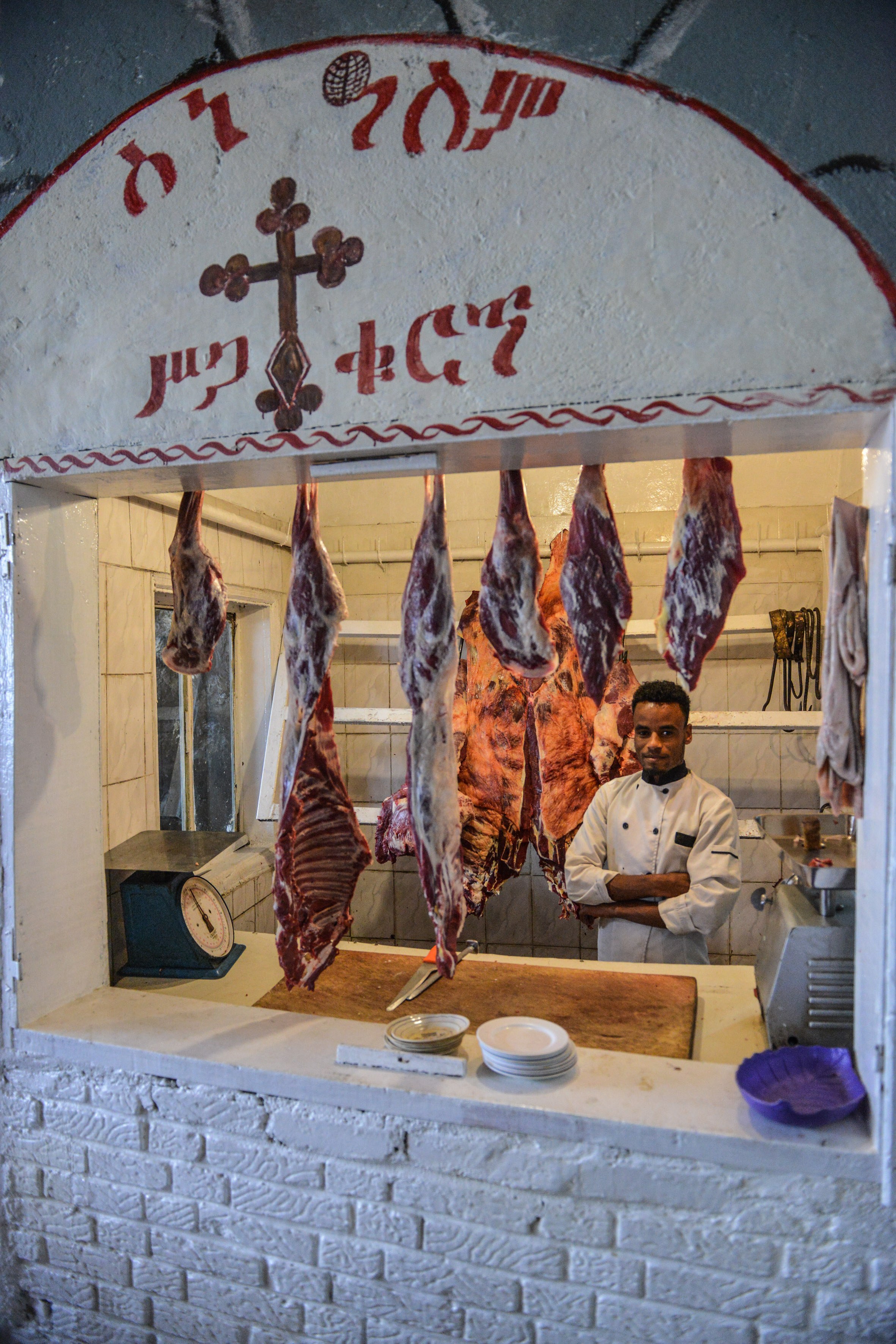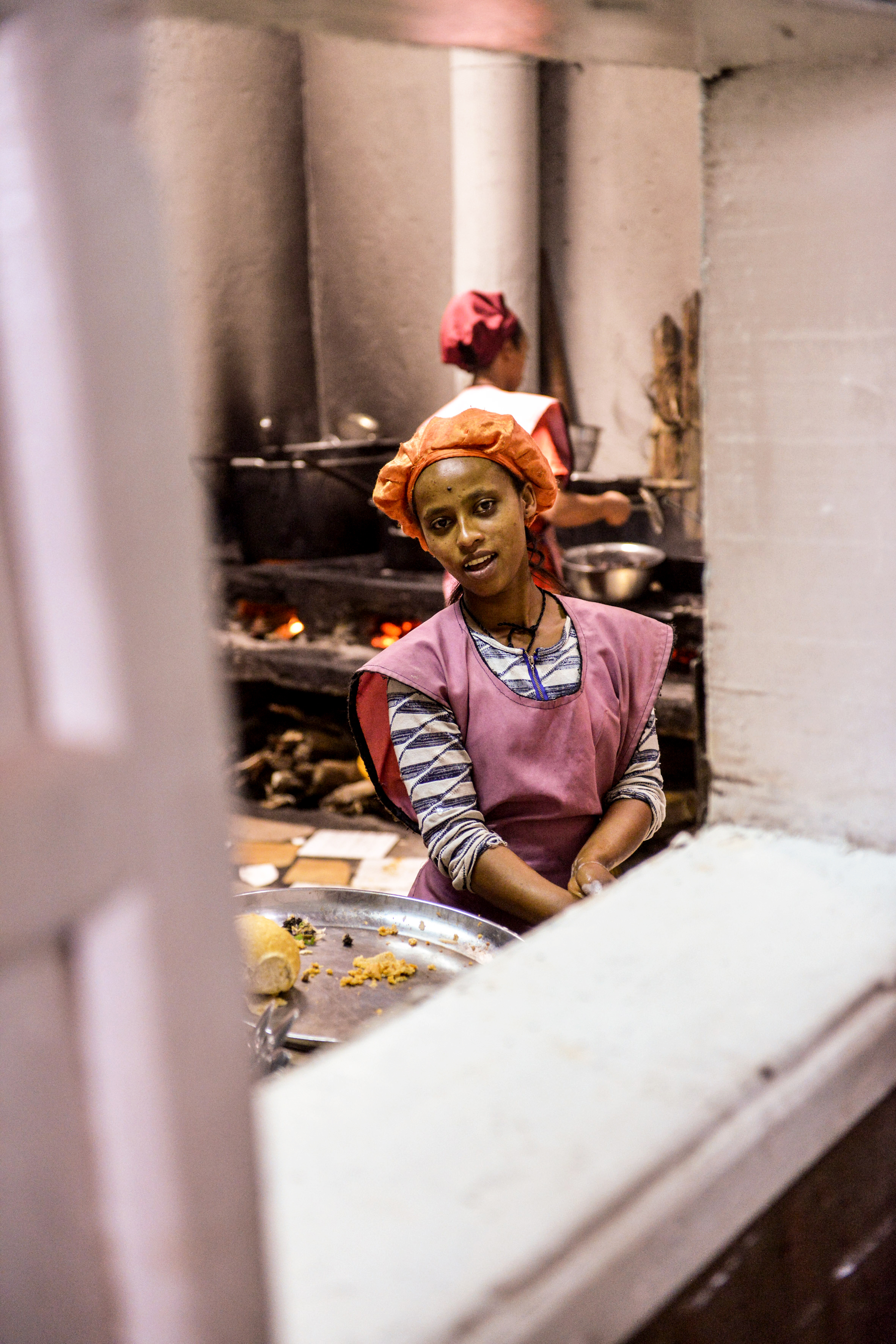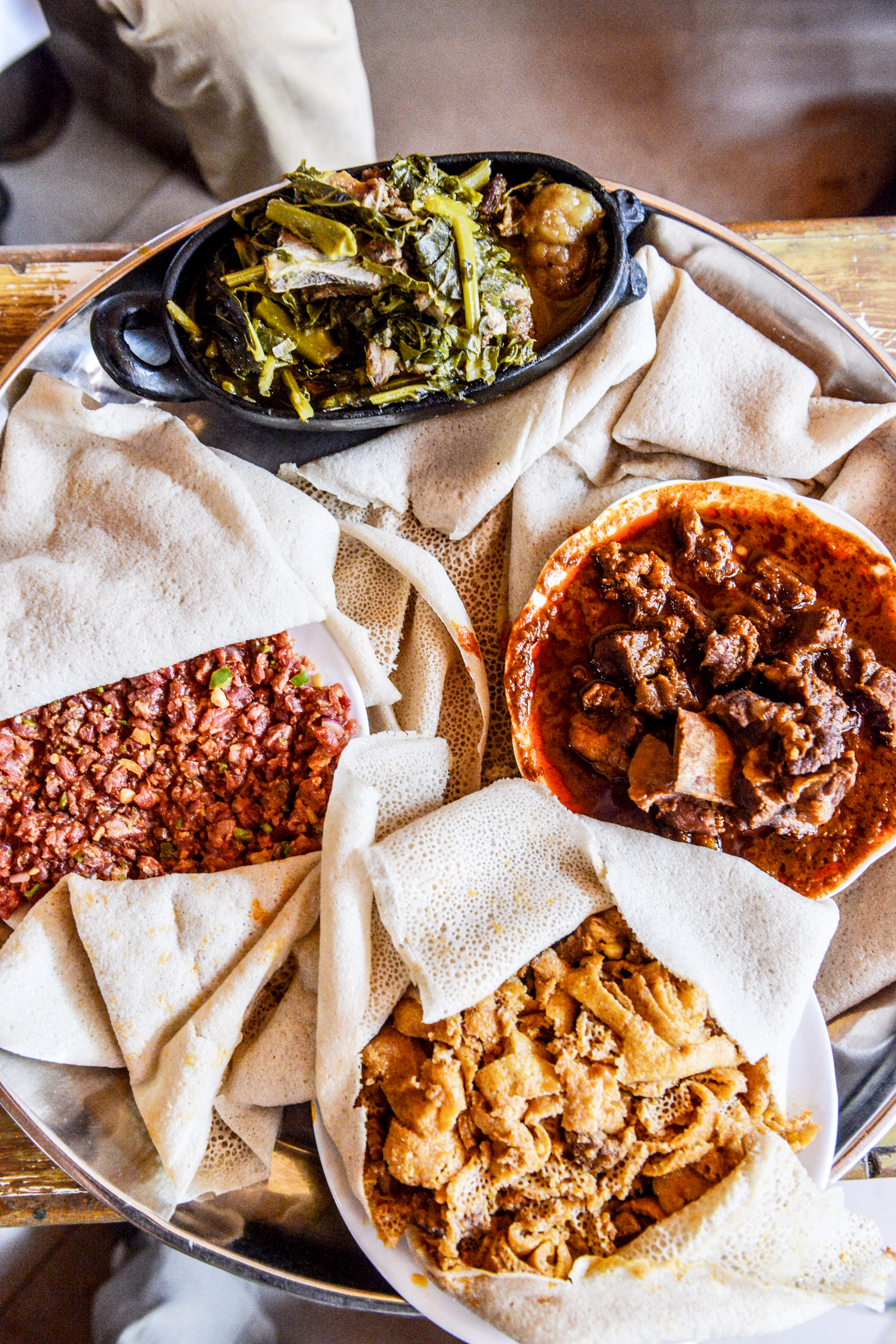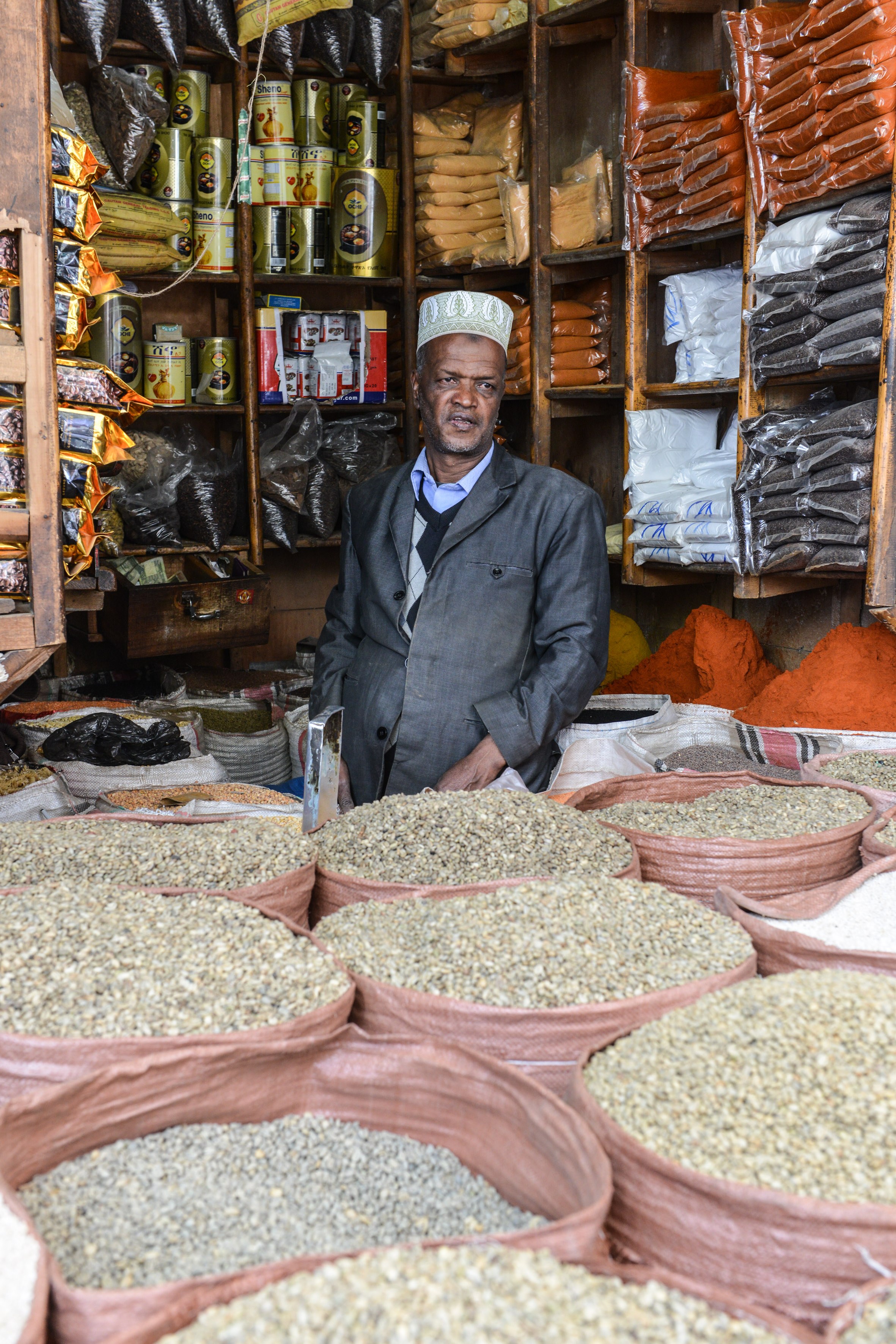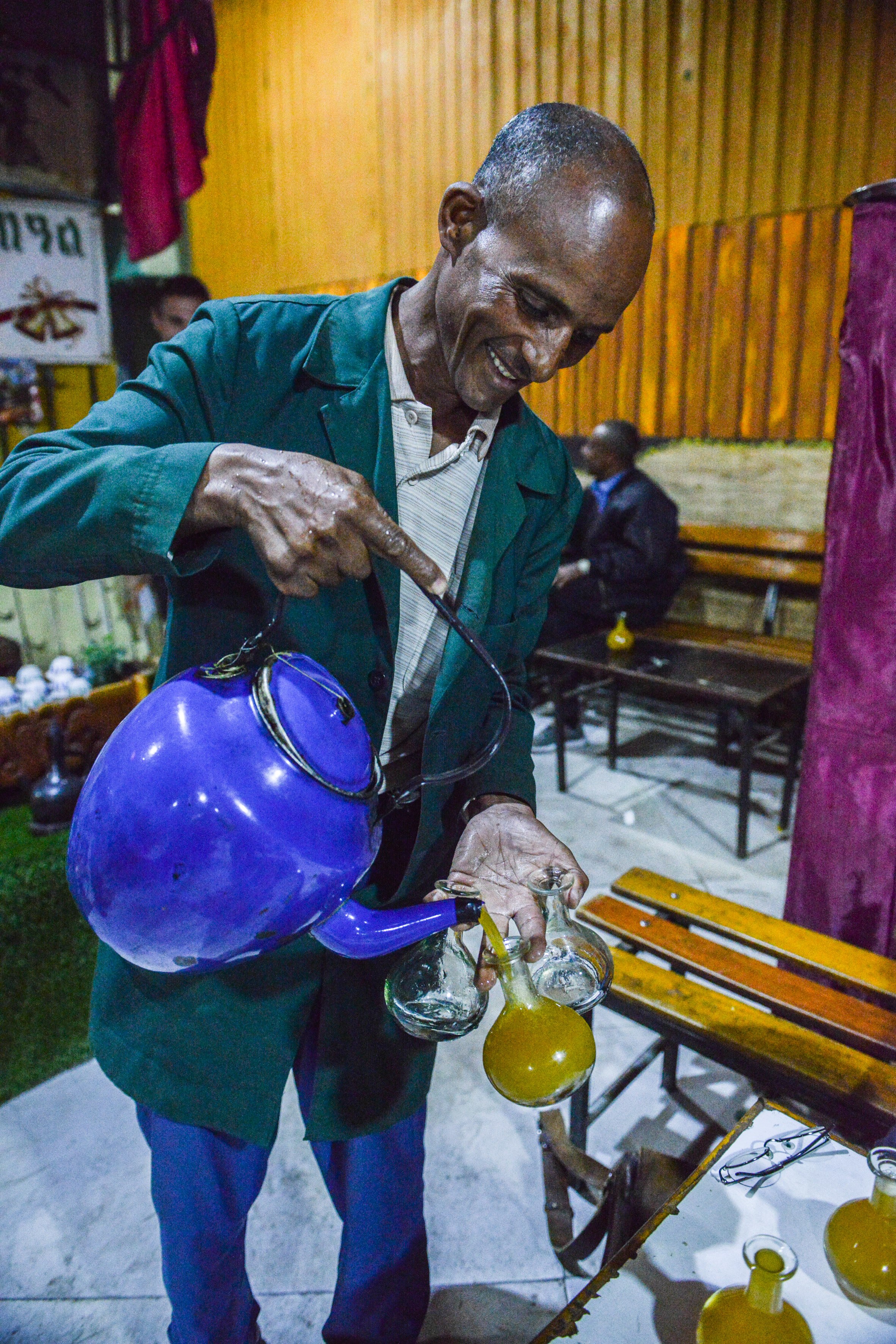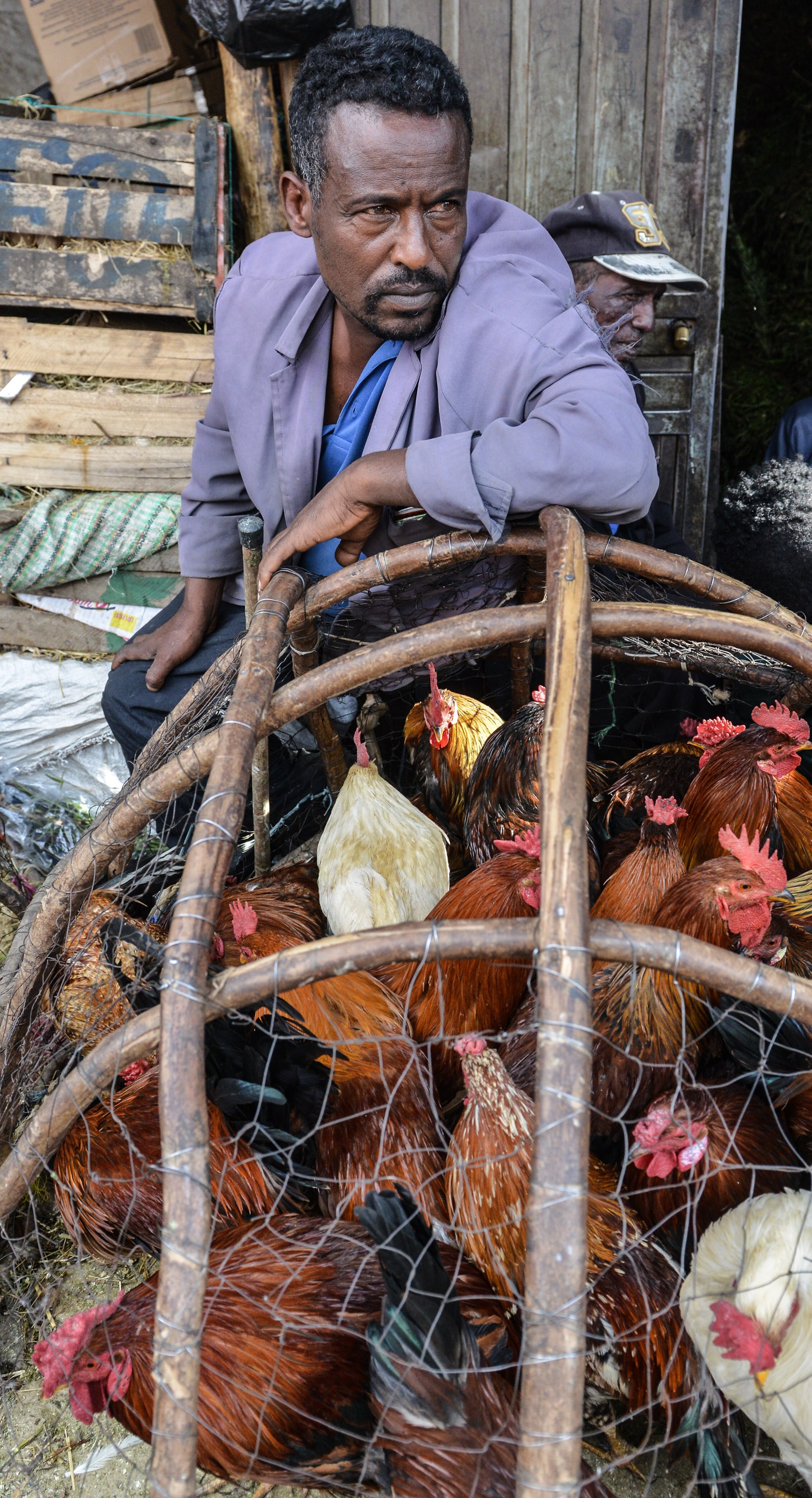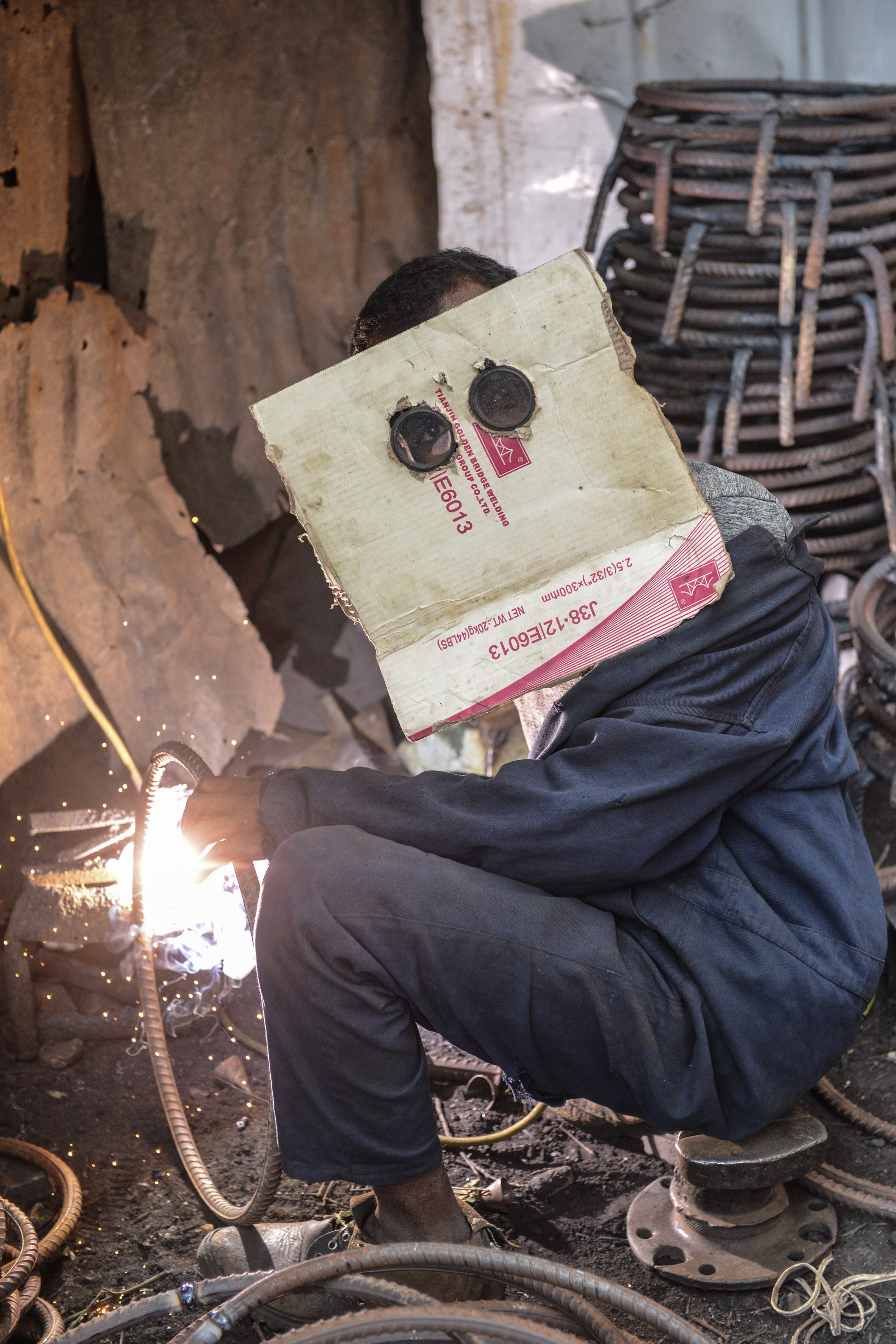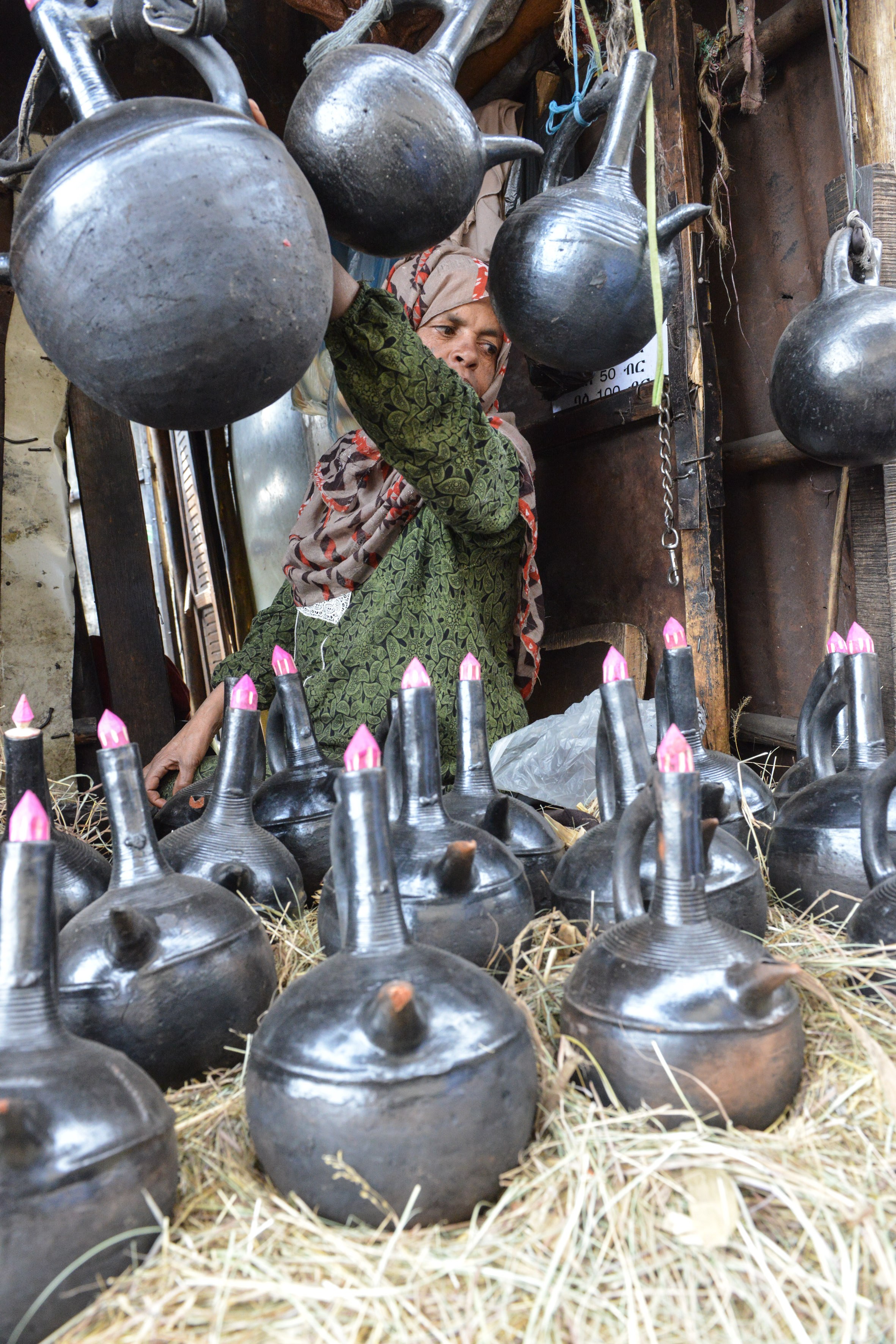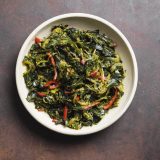Tamerat kebede might be 99. Or 85. He looks 70. It’s hard to know, even after he shows me an identification card with a 1921 birthdate. This is Ethiopia and time is different. According to the country’s official calendar, it’s 2012. Whatever his age, Kebede is nimble and fast. I struggle to keep up as he leads me deep into the narrow bowels of Africa’s largest open-air market.
The Merkato sprawls over several miles of Addis Ababa, the country’s capital. With many thousands of shops and stands, hundreds of thousands of sellers and shoppers, it is raucous, chaotic and winding. Whole alleyways of fermented butters. Rollicking courtyards of herbs. Kitchenware in heaps and piles. Fruits, nuts, greens, teas, tools and toys. Each has a place.
Kebede has worked in the Merkato’s spice market for 60 years, a warren of passages where mounds of cardamom, cumin and innumerable other seasonings spill onto the cobblestones. Where chili powder chokes, sending you sneezing-coughing for air. It is sensory percussion, a fascinating and overwhelming slice I am lucky enough to see through Kebede’s eyes.
I’d met him just hours before when he sidled up to my table at Sena Alem, a tej bet—or honey wine bar—nestled into one of the Merkato’s more colorful alleys, a long line of shacks from which women beckon. The honey wine is bright yellow and tastes fruity, fermented and sharp. Servers at the all-male affair wear purple blazers and walk table to table, decanting the wine from battered blue tea kettles into berele, or heavy, bulbous glass flasks. Each high-octane pour costs 15 birr, or about 40 cents.
For the reasonable price of sharing my lunch, Kebede offers a tour into the depths of the Merkato. Not an offer to be declined, so I order amply. Five different meaty dishes, including gomen besiga, a gently spiced mix of tender collard greens and beef. It’s all served with flask upon flask of honey wine and sheet after sheet of injera, Ethiopia’s ubiquitous spongy sourdough flatbread that accompanies every meal to serve equally as grain and silverware, for here all food is eaten by hand.
Kebede regales with gripping stories of life under famine, communism and—finally— relative prosperity. Listening to him, pangs of sorrow ride an incongruous sidecar to the joy in my mouth. Every dish is wonderful, but the gomen besiga particularly captivates. Truthfully, I’ve never much bothered with collards. These collards shame me for that omission. The greens themselves are meltingly tender, amazingly savory, not just from the beef, but also from cumin, cardamom and ginger.
Kebede regales with gripping stories of life under famine, communism and—finally— relative prosperity.
So good, in fact, I visit Sena Alem’s kitchen before Kebede’s spiraling four-hour tour. There, in a rough-hewn stone room, a handful of young women cook most of the dishes over a wood-fired stone stove. Eden Arega—the head cook who works from recipes passed chef to chef over the bar’s 25 years—walks me through the blissfully simple sauté of meat and greens.
It begins as so many dishes do, with onions cooked in butter, though here the butter is fermented, rich and ripe. After that, the greens, beef, spices, garlic, ginger and chili are added, then simmered until aromatic and tender. The result is as if you crossed a Caesar salad with a steak. It’s that savory, that rich. I find myself wishing for a fork so I could simply snarf it up.
In the coming days, I eat similar dishes in homes and restaurants across the city. And in doing so, there is a revelation: a vegetarian version of gomen besiga that is even easier and faster to make, yet somehow remains equally savory. Gomen wat—literally, collard stew—ups the onions, ginger, garlic and spices, loses the beef and remains every bit as savory and addictive.
Back at Milk Street, we opted to recreate the relatively lighter, yet equally rich gomen wat. And it was a simple matter. The biggest change was the fermented butter, a rare ingredient in the U.S. We instead opted for ghee, or Indian clarified butter, which has some of the same complexity. Alternatively, a teaspoon of white miso is a good option.
The result was nearly as good as what I’d enjoyed at Sena Alem. Minus, of course, the honey wine and Kebede’s stories. Which really do make the meal.
More From Ethiopia

